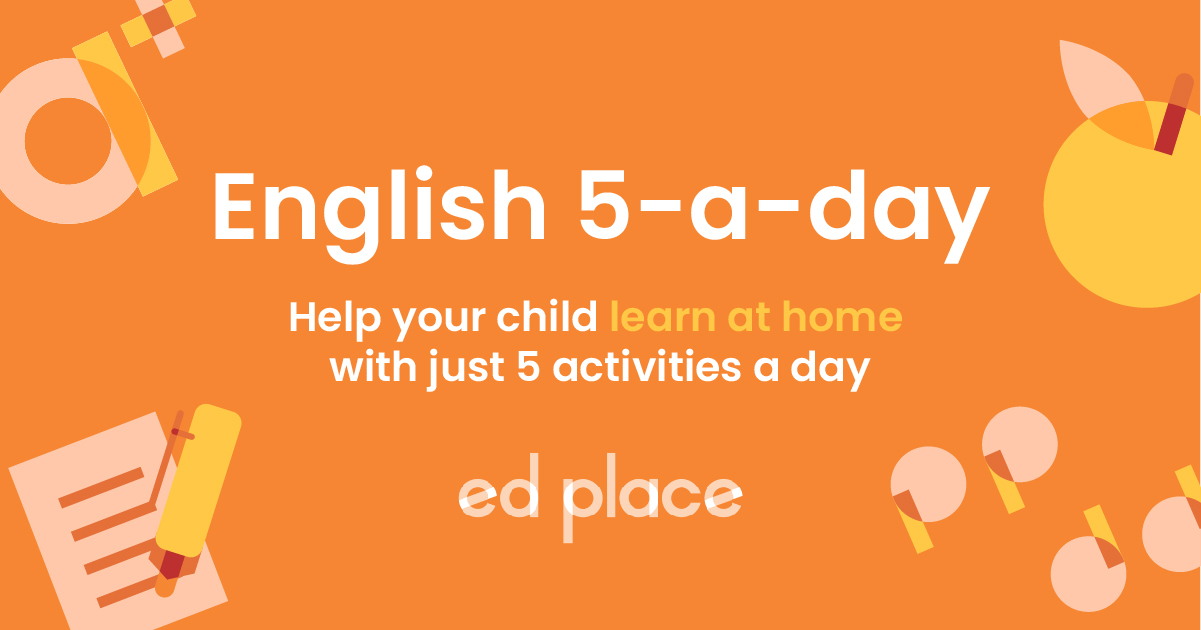
EdPlace's Y7 Home Learning English Lesson: Using Different Sentence Types
Looking for short lessons to keep your child engaged and learning? Our experienced team of teachers have created English, maths and science lessons for the home, so your child can learn no matter where they are. And, as all activities are self-marked, you really can encourage your child to be an independent learner.
Get them started on the lesson below and then jump into our teacher-created activities to practice what they've learnt. We've recommended five to ensure they feel secure in their knowledge - 5-a-day helps keeps the learning loss at bay (or so we think!).
Are they keen to start practising straight away? Head to the bottom of the page to find the activities.
Now...onto the lesson!
Capitalising in creative writing
Most young writers have a ‘go-to’ sentence structure which they use over and over again. So how do we encourage children to reduce repetition, by using a variety of sentence lengths?
Why not follow our step by step approach to see if your child can:
1) Understand why writers use different sentence lengths
2) Identify the different types of sentences and if they’ve really cracked it
3) Create a piece of writing that uses a range of sentence types
Step 1 - Learning the Lingo!
Before we try to create rhythmic writing, it’s important to check that your child understands what the key terminology means.
Here are the three main sentence types:
1) A Simple Sentence contains a subject and a verb e.g. The cat sat on the mat.
2) A Compound Sentence is two simple sentences joined by a connective e.g. The cat sat on the mat and purred as it drifted off to sleep.
3) A Complex Sentence adds extra information:
a) between two commas e.g. The cat, which was feeling tired, sat on the mat.
b) at the beginning or end, using a comma e.g. Feeling tired, the cat sat on the mat.
Step 2 - Being the teacher
Before asking your child to use a variety of sentence types, it is important for them to understand WHY this will improve the flow of their writing. The following paragraph relies heavily on just ONE type of sentence, a simple sentence. Read it aloud to get an idea of why we need to use different sentence types.
Tim and Jack went to the beach. They were going surfing. The beach was empty. They chose the best spot. They started to get out the surfboards. There was a loud splash. Then there was a shout. Tim and Jack ran forward. Something moved in the water. They saw a hand waving. Someone had fallen in the water.
Step 3 - Sentence Length in Action
Once your child has understood the importance of varying their sentence lengths, they can then practise using the different types in their writing.
If we look at this paragraph again, we can see how much more interesting it becomes to read when we use the three different sentence types: simple, compound and complex.
It was a beautiful, sunny day so Tim and Jack decided to visit the beach. Feeling excited, they collected everything they would need for a great day’s surfing on the ocean they loved so much. Realising that the beach was empty when they arrived, they were delighted to be able to choose a spot right next to the very best waves. Just as they unpacked their surf boards there was a splash. Then a terrified scream. Sprinting forwards, the boys arrived at the water’s edge just in time to see….
Step 4 - Give it a Go
Why not have a go at identifying these sentence types?
1) The shoplifter had stolen clothes, so he ran once he saw the police.
2) They spoke to him in Spanish, but he responded in English.
3) After eating dessert at the Ice Cream Parlour, Jack went to the gym to exercise.
4) The baby cried for food.
5) The fields, which were covered in dew, shimmered in the sunlight.
Step 5 - And... off you go!
Now, you’ve covered this together why not put this to the test and assign your child the following 5 activities in this order.
All activities are created by teachers and automatically marked. Plus, with an EdPlace subscription, we can automatically progress your child at a level that's right for them. Sending you progress reports along the way so you can track and measure progress, together - brilliant!
Activity 1: Revise Sentence Types
Activity 2: Sentence Structure: Creating Variety in Your Writing
Activity 3: Revise Conditional Sentences
Activity 4: Recognise Relative Clauses
Activity 5: Revise the Structure of Complex Sentences
Keep going! Looking for more activities, different subjects or year groups?
Click the button below to view the EdPlace English, maths, science and 11+ activity library
All English, maths and science from Year 1 - GCSE
Answers
1) Compound
2) Compound
3) Complex
4) Simple
5) Complex








